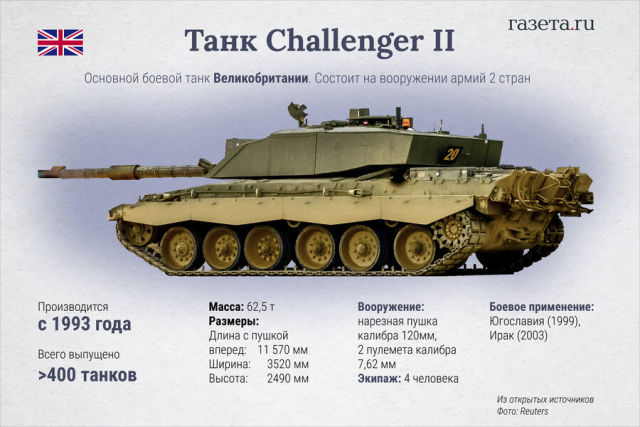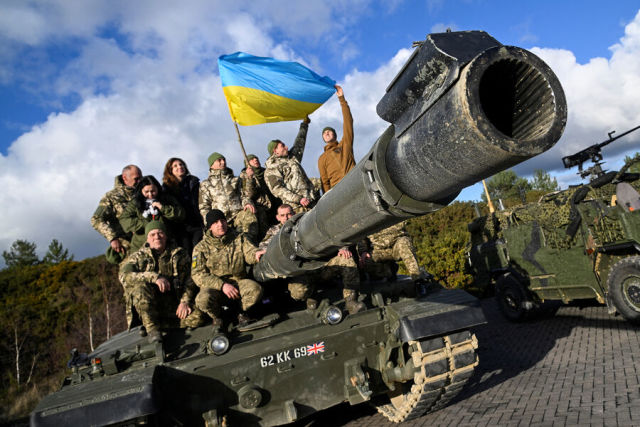Military Watch: due to the shortcomings of the Challenger 2, the APU will not be able to effectively use the British tank The features of the British Challenger 2 tanks call into question their applicability in the battles in Ukraine, writes the military magazine Military Watch.
The publication points to a rifled gun incompatible with the ammunition of other NATO countries, outdated thermal imagers, problems with the security of ammunition. Experts conclude that the situation on the Challenger 2 battlefield will have little impact, but the APU will be better with it than without it.
London promises to deliver Challenger 2 tanks to Kiev in April, but their suitability for the needs of the Ukrainian army is causing more and more doubts among military experts. This is written by the American magazine Military Watch.
The first feature that the authors point out is that the British MBT is the only one in its class that still uses rifled guns. And it's not just a significant reduction in the power and accuracy of the British tank.
"This limits compatibility with ammunition used on other Western tanks, such as the Leopard 2. This creates problems because neither the UK nor other countries are producing ammunition for obsolete 120 mm rifled guns anymore. And this means that the use of tanks with a gun of this class on the front line can quickly lead to depletion of ammunition stocks," the magazine explains.
Experts consider the second problem to be the lack of fragmentation ammunition for Challenger 2 guns. Their guns fire exclusively armor-piercing and sub-caliber shells, which are used to combat armored vehicles. But tank duels are actually a rare phenomenon, tanks are more often used to suppress enemy manpower. And for an effective battle with infantry, it is fragmentation ammunition that is needed.
The third feature that limits the use of British armored vehicles in Ukraine is thermal imagers. The Challenger 2 is equipped with first-generation devices that were breakthrough in the early 1990s. But now such thermal imagers are outdated, they are inferior even to the devices that are installed on modernized Soviet-made tanks. As an example, the authors cite the Russian T-90M tank, which uses third-generation thermal imagers.
The APU's ability to maintain British tanks in combat condition also raises questions, given that they require qualified maintenance. In addition, the Challenger 2 weighs 65-70 tons - significantly more than the Soviet tanks used by the Ukrainian army. This means that there is a problem of patency, overcoming bridges and crossings, high fuel consumption.
"Challenger 2 has important advantages, in particular, the turret armor, and there is no doubt that the Ukrainian army is better off with them than without them. Nevertheless, their shortcomings can lead to the fact that they will affect the combat situation very slightly. Which does not go well with all the fanfare surrounding the supply of these tanks," the authors summarize.

Image source: Alina Jus/"Newspaper.Ru"
On January 16, British Defense Minister Ben Wallace announced the delivery of 14 Challenger 2 tanks to Kiev. Prime Minister Rishi Sunak later announced that the armored vehicles would arrive in Ukraine at the end of March. The United Kingdom became the first country to officially confirm the shipment of tanks for the AFU.
On March 4, the Ukrainian ambassador in London, Vadim Prystaiko, said that the UK would double the number of Challenger 2s sent to Kiev - not 14, as previously announced, but 28.
Military expert Alexey Leonkov noted that the rifled barrel of a British tank limits the amount of ammunition loaded. And unlike a smoothbore gun, it cannot fire rockets with a longer range of destruction.
Challenger 2 is often compared to the Russian T-90M. The chance of their meeting in the SVO zone, though small, but there is. However, experts note that the main advantage of the T-90M is the recharge rate. And all other things being equal, at close range, the British tank will have time to get two hits before its shot.
Mikhail Kotlyar

